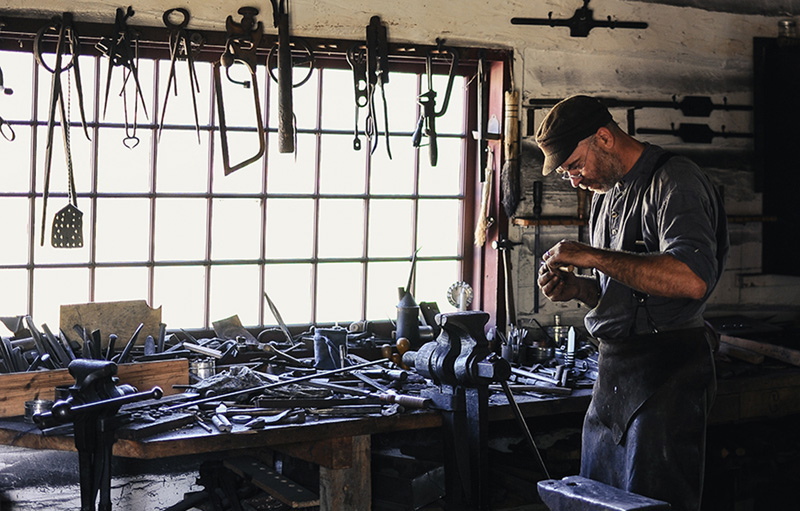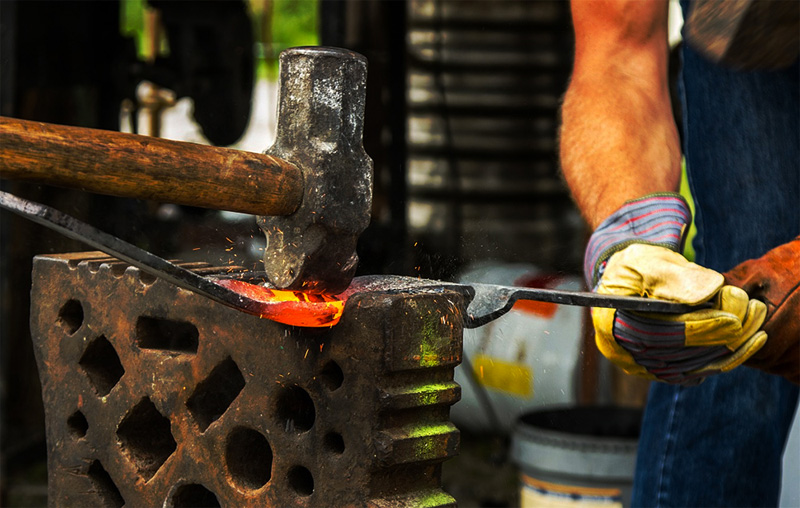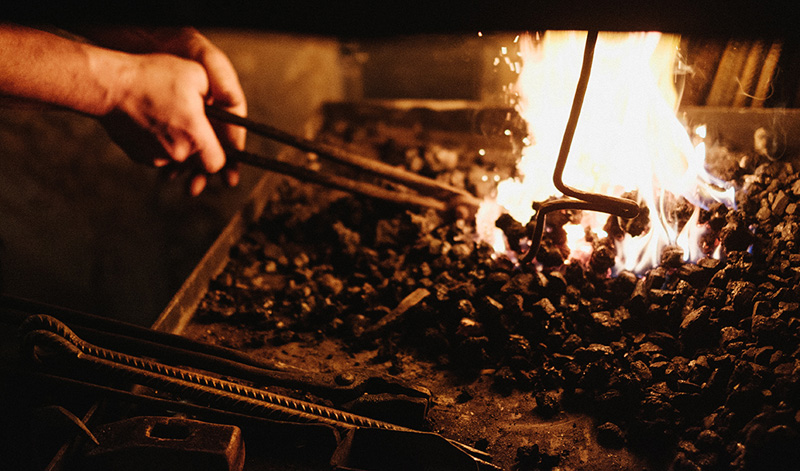If you are looking for a new creative challenge you might want to try your hand at blacksmithing. I recently came across the art of blacksmithing on a
If you are looking for a new creative challenge you might want to try your hand at blacksmithing. I recently came across the art of blacksmithing on a business trip to San Francisco. I was blown away by the intensity and artistry of this highly creative skill.
Squeezed in between business meetings, I had the pleasure of visiting The Crucible in Oakland, San Francisco. It’s an amazing project in a huge warehouse with several workshops offering everything from jewellery making to glassblowing, welding and blacksmithing. Virtually any hands-on creative artistry can be done there. There’s even a bike workshop where you can learn how to fix up bikes.
There’s a real sense of pride and community at the project and my 2 hours in the blacksmithing workshop were a real eye-opener. It was a hot, intense and surprisingly enjoyable experience. It’s one I’d like to try my hand at again now I’m back in the UK.
So what exactly is blacksmithing?
Blacksmithing is the craft of heating metal (iron or steel) in a forge (incredibly hot oven) to make it soft then hammering and bending the hot metal to make artefacts and sculptures. A blacksmith is essentially a metalsmith. Blacksmithing isn’t as I first envisaged ‘the shoeing of horses.’ Though farriers – those who shoe horses – do use the art of blacksmithing to shape steel horseshoes to fit onto horses’ hooves.
What do blacksmiths make?
Blacksmiths make a huge range of different objects, from industrial tools to decorative items. Examples are:
- Specialist tools
- Fire escapes
- Security grills
- Decorative iron gates
- Furniture
- One-off creative commissions
A farrier makes horseshoes.

Blacksmithing – a potted history
The skills of blacksmithing probably began in the Iron Age, when simple tools like knives and scrapers were made. Eventually spear heads and arrow heads were also made from metal rather than stone. A simple process to produce wrought iron can be traced back to the Middle East four thousand years ago. Nothing changed for hundreds of years until charcoal was discovered and could produce furnace heat, and it was discovered how to extract better quality iron from the ore. Then blacksmithing really took off. Ironmaking spread across Europe reaching Britain about 450 BC.
A thriving industry was established and further built upon when the Romans came to Britain. There wasn’t any further development in the industry until around the 13th century when water power enabled bigger bellows to be driven by waterwheels and larger tilt hammers could be deployed. The Worshipful Company of Blacksmiths was formed in 1299.
The next major development was the introduction of blast furnaces, with the first one established in Sussex in 1496. Large quantities of cast iron could now be produced. Much of it was converted to wrought iron.
The industrial revolution in the late 1700s brought the mechanisation of many previously manual tasks. This called for the making of machines. Demand for machines overtook the need for hand-crafted work, which subsequently declined. In 1855 steel was being produced from pig iron and could be produced more efficiently and cheaply than wrought iron. By 1975 wrought iron was no longer being produced (it was approximately 10 time more expensive than steel).
The traditional role of the blacksmith in the community has almost disappeared. There were once blacksmiths in almost every town. But the creative craft is making a comeback. There’s been a revival in interest and several colleges are offering forgework in conjunction with the City and Guilds Institute.
What skills do you need to do blacksmithing?
There are many courses and apprenticeships for blacksmithing. So whether you want to do a beginner’s 3-hour workshop or you are serious about learning the trade, there are a number of options for getting to grips with the craft. The main skills required for blacksmithing are:
- Good hand-to-eye coordination
- The capability of developing practical skills and technical ability
- Good problem-solving skills
- Creative and design skills for decorative work
- Good communication skills
- Maths skills for measuring and calculations
What will you do on a beginner’s workshop?
On a beginner’s workshop (available at experience day specialist Into the Blue) you’ll learn the basics of blacksmithing and make a simple, small object. The small projects generally include spoons, knives, pokers, toasting forks and hooks. You’ll be introduced to the fundamental skills of blacksmithing and learn about the basic blacksmithing tools, such as the different types of hammer, the use of anvils, tongs and so on.
You will learn the basic blacksmithing techniques such as tapering, upsetting, flattening, dishing and bending of hot steel. Most importantly you’ll be versed on safety in the workshop and you’ll be required to wear safety clothing, which may include an apron, gloves and safety goggles. This is largely because you will be working with metal that is heated to up to 900 °C.
Can anyone do the blacksmithing workshops?
Blacksmithing is a very physical activity. You’ll be hammering, twisting and splitting metal. If you have any physical injuries or disabilities, you’ll need to check with the course provider or forge if you are a suitable candidate for the course. Safety is of paramount importance. It’s also an extremely hot activity as you’ll be working near furnaces, so expect to sweat! You’ll need to be eighteen years old.
What do you wear on a blacksmithing course?
Expect to get dirty. Wear clothes that are of natural fibres (cotton), not synthetic materials. Wear full length trousers and long sleeves and closed leather shoes. If you have safety work boots with steel toe caps then definitely wear those. You’ll be surprised at how tricky it is to get used to holding hot pieces of metals with tongs, which can easily drop to the floor. Watch those toes!

You’ve read the blurb. Now all you need to do is book your workshop. These courses are popping up all over the country. You can even buy them as gifts. Happy blacksmithing. You’re going to love it.



















































































































COMMENTS